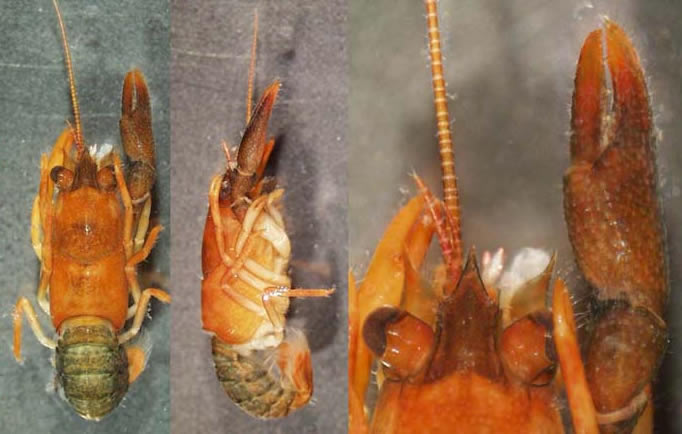
THE XERCES SOCIETY FOR INVERTEBRATE CONSERVATION Aquatic Invertebrates in Pacific Northwest Freshwater Wetlands |
| Identify taxa |
 |
|
Pacifastacus spp. (signal crayfish and kin) |
Pacifastacus is the only genus of crayfish native to the Pacific Northwest. There are six species, but one is probably extinct and two others are in trouble. In the late 1800's, a disease was imported from Mississippi that decimated European crayfish populations. The signal crayfish (Pacifastacus leniusculus) is unaffected by the disease and was heavily introduced where crayfish were unavailable for trapping. Pacifastacus is a long-lived genus, living up to 8 years and reproducing up to 4 times. They spend those years primarily scavenging organic material and harvesting aquatic plants, but will prey on snails and other invertebrates. Pacifastacus species are distinctive among North American crayfish because they don't have a thick hook or lobe off the bottom segments of their legs. They also do not have a small rounded plate between their last two pairs of legs. The species of Pacifastacus can be difficult to distinguish, but there are some relatively straightforward differences that are laid out in an on-line key to Pacifastacus from the Carnegie Museum of Natural History Section of Invertebrate Zoology. Pacifastacus spp. - native Pacific Northwest crayfish |
Size: xlarge Identifying feature(s): tail is long and well-developed; body flattened top to bottom; have well-developed front claws (unless broken off); always have a small gill under the carapace above the last legs. Habitat: streams, lakes; still or moving waters Tolerance to pollutants: moderate |
 |
|
© 2007 Xerces Society
Contact info@xerces.org